A broody hen can be invaluable for homesteaders, hobby farmers, or the average backyard chicken keeper. Not only do they hatch and raise clutches of chicks throughout the year, but they also optimize your flock’s sustainability.
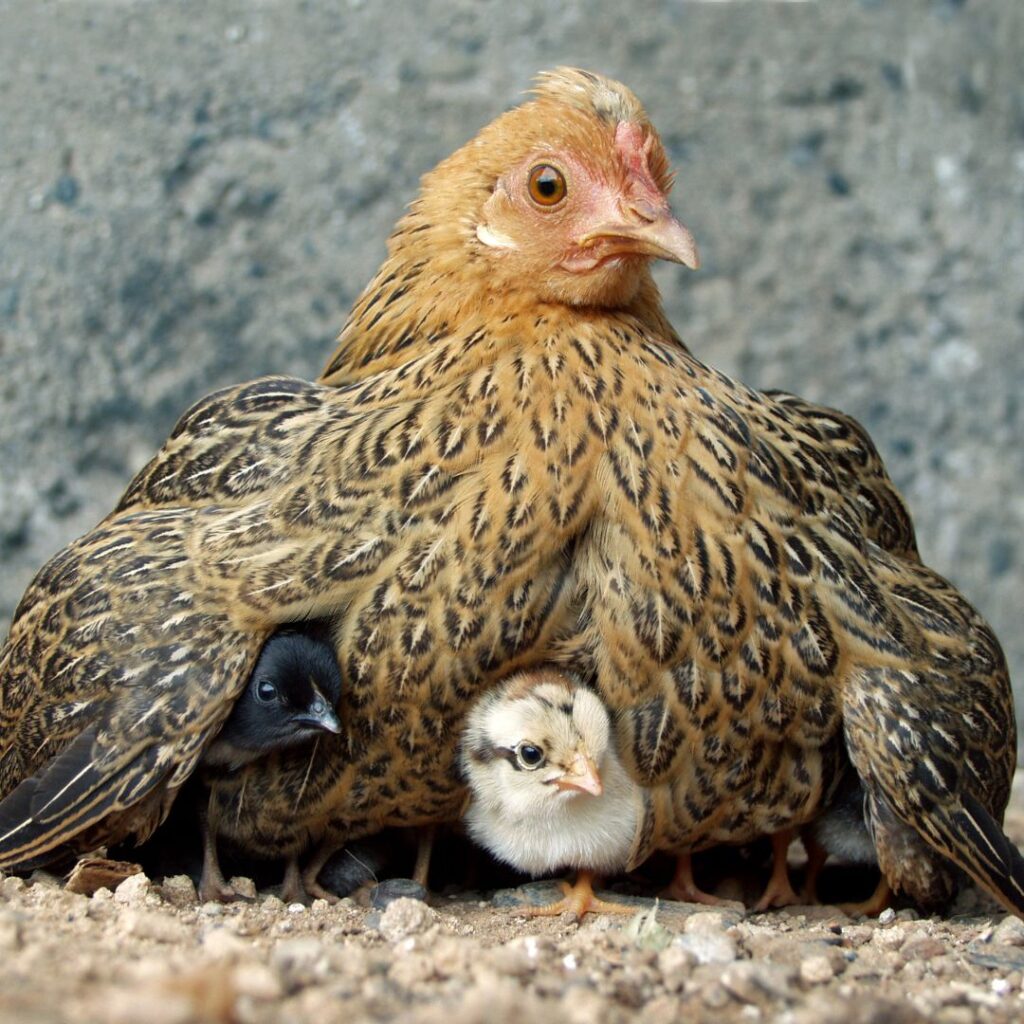
When it comes down to it, having a few broody hens in your flock can be incredibly beneficial for backyard chicken enthusiasts and backyard hobby farmers alike. These hens provide ample cost savings by eliminating the need for an expensive incubator for hatching eggs. They also possess natural parenting skills that ensure their youngsters will survive and thrive into adulthood. So if you want a sustainable chicken flock without all the hassle, consider adding a few broody hens today.
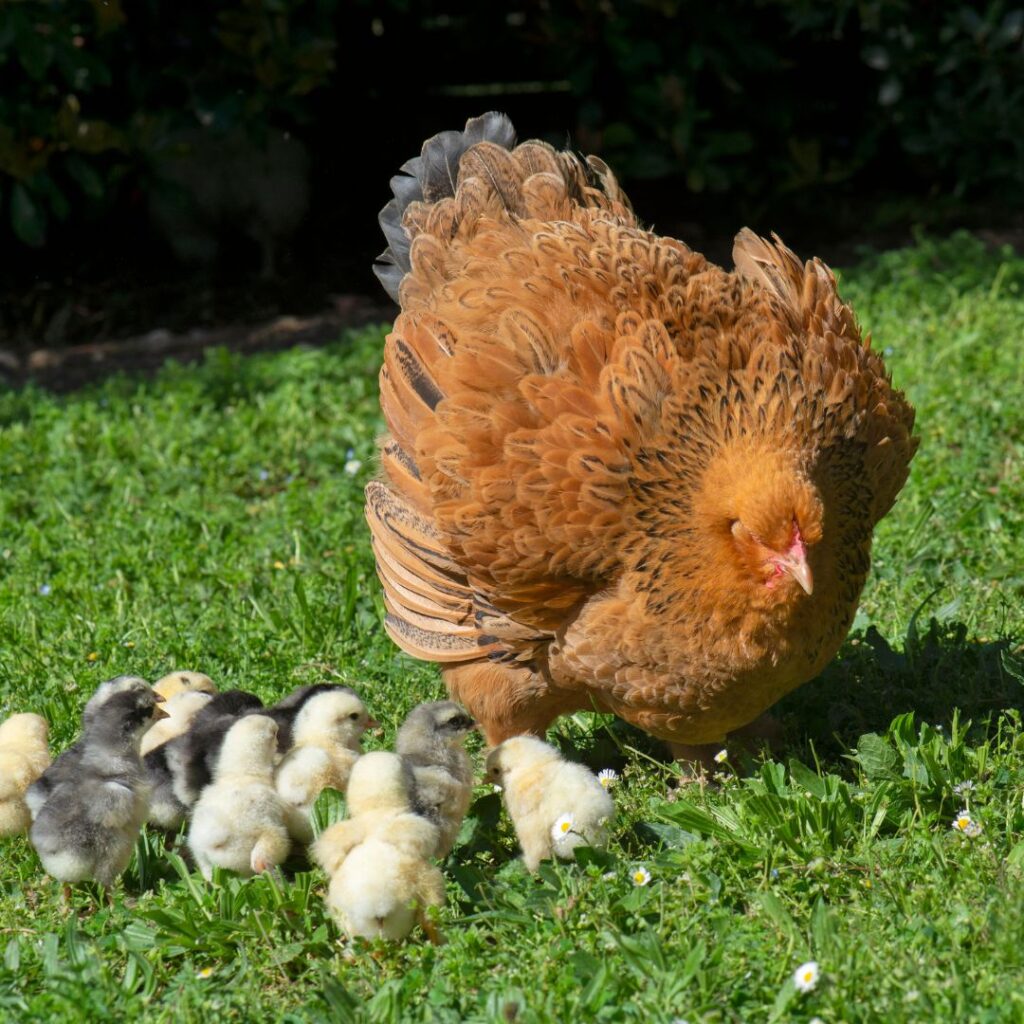
Not all breeds have the same broodiness. Certain breeds are more likely to be broody than others, so we’ve put together nine of the best broody breed hens for your backyard flock.
Look at some of the best broody hen breeds your flock may benefit from.
What is Broodiness?
A “broody” hen is an egg-laying bird triggered to start incubating eggs by a strong maternal instinct to hatch her baby chicks. Broodiness is part of hormones, maturity, genetics, and environment.
After several days of preparation, she will sit on her clutch of eggs to incubate them. She will do this until the chicks hatch (around 21 days), and then she will care for them until they are old enough to fend for themselves (around 7-8 weeks).
Interestingly enough, a hen will sit (or set) on a clutch of the eggs of any bird. Your hen will sit and care for any fertile eggs you’ve placed under her. You can even place small bantam eggs under a standard-sized broody hen or a large egg under a broody bantam hen.
The only limitation is to be sure the broody hen can sit on, cover and care for the eggs as they develop into chicks.
Do Hens Need A Rooster To Be Broody?
The short answer is no.
Hens need roosters to have fertile eggs. However, the act of being broody can happen with or without fertile eggs or a rooster being present at all.
9 Best Broody Hen Breeds To Hatch Eggs
Today’s hens have been developed to breed the broodiness out of most hens. Most chicken owners want productive layers. A broody hen takes a hen out of production several weeks a year, reducing egg production.
However, to maintain a sustainable flock, you must keep a consistent flow of young birds coming into your flock as future contributors. Even one hen or two broodies is an excellent long-term plan for chicken owners.
While many breeds are less likely to go broody, there are still some great breeds for broodiness to help you achieve your sustainable flock goals. These are some of the best broody hens.
Brahmas; Broody Queens
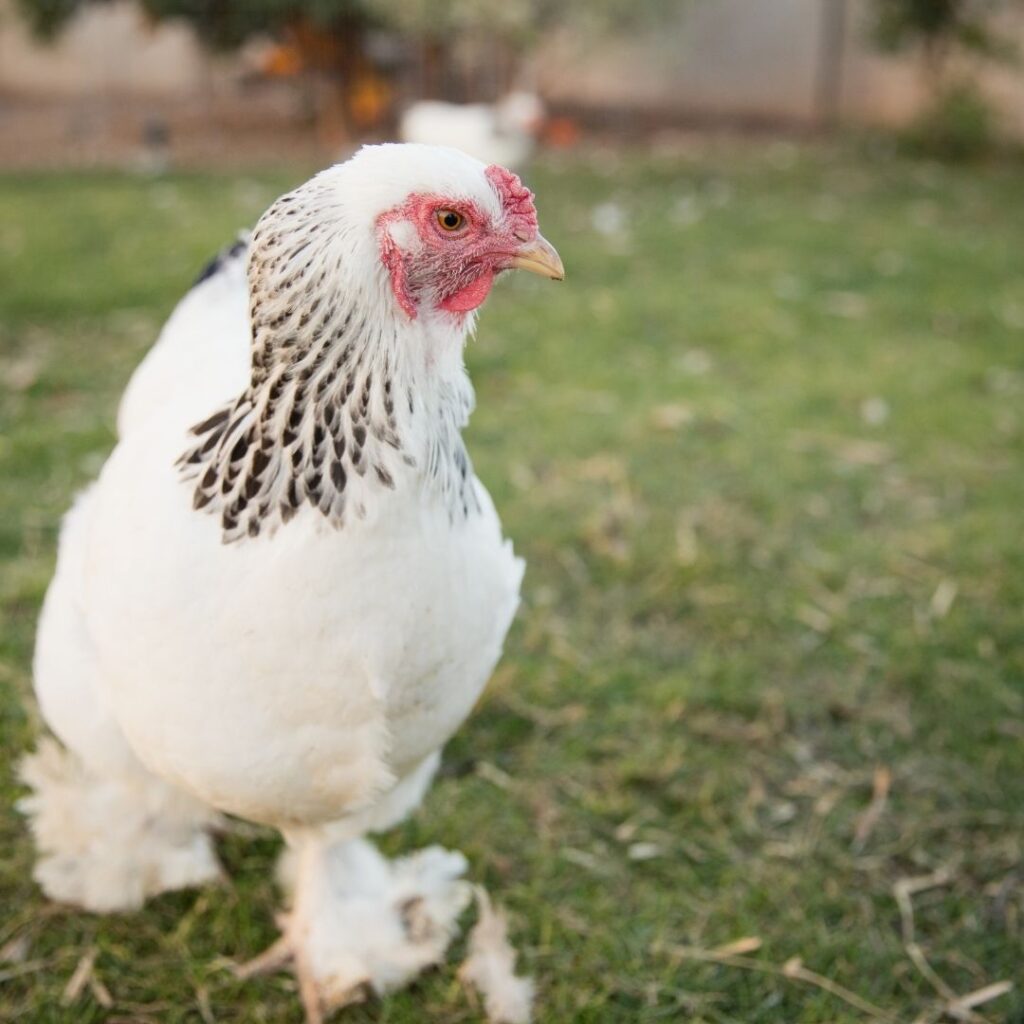
This beautiful extra-large bird is a great addition to any flock. The Brahma’s stately presence, along with their feathered legs, is a sight to see walking through a field of hens.
They are cold, hardy, and very heat-tolerant chickens. The Brahma chickens are an excellent breed for meat, egg-laying, and brooding. These hardy birds will lay up to 250 large brown eggs per year and are known for their gentle nature, which makes them an excellent choice for new chicken owners and hobby farmers.
- Recognized by APA – Yes, 1874
- Cold Hardy – Yes
- Heat Tolerant – Yes
- Dual purpose breed – Yes
- Size – Hens – 9 1/2 lbs
- Eggs – Large, brown, 180-240 eggs per year
- Personality – Gentle, friendly, docile, excellent as a pet chicken
Cochins
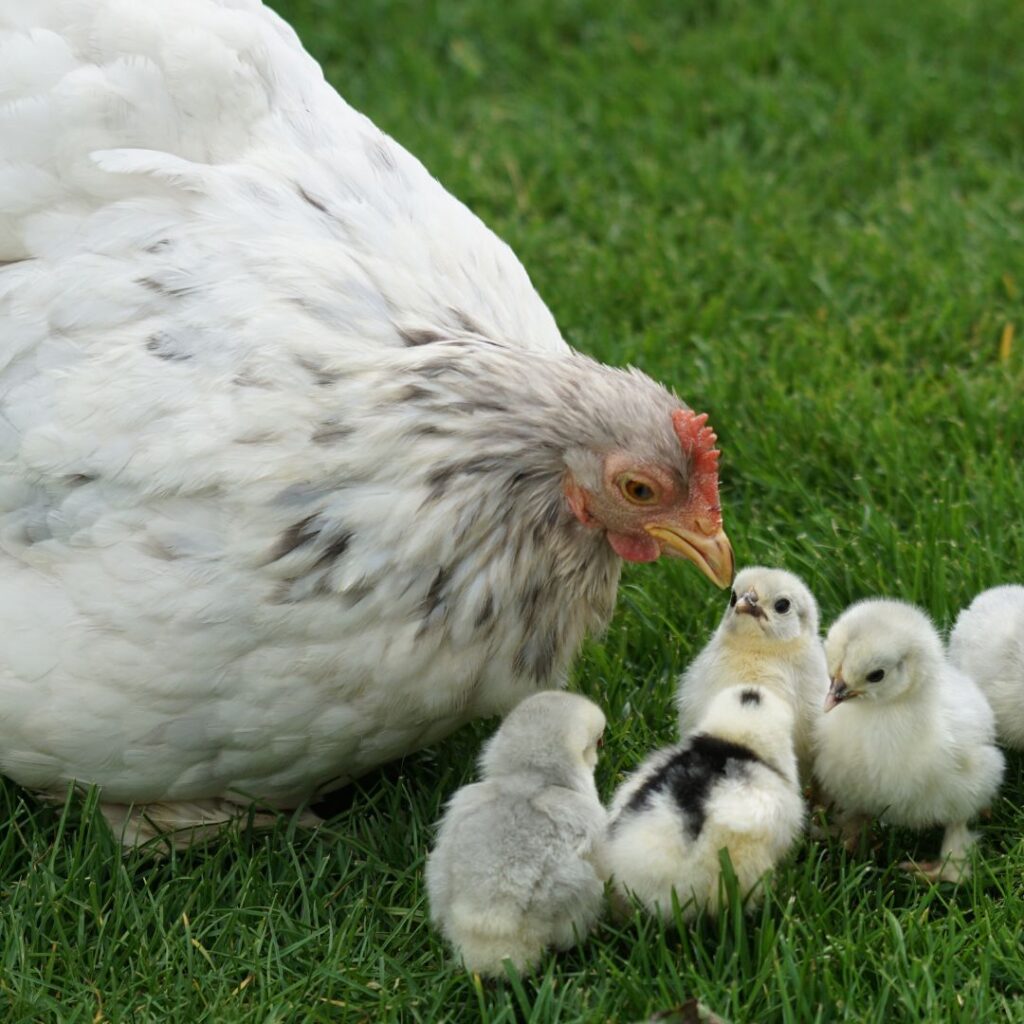
Cochin hens are gentle chickens known for their sweet nature. They are known to go broody. They also make wonderful mothers. They are cold-hardy birds that produce medium-sized brown eggs at a rate of 150-200 per year.
- Recognized by APA – Yes, 1874
- Cold Hardy – Yes
- Heat Tolerant – No
- Dual purpose breed – Not very good.
- Size – Hens – 8 1/2 lbs
- Eggs – Medium, Brown, 120-160 per year
- Personality – Docile, friendly, excellent pet for families with children and seniors.
Cornish
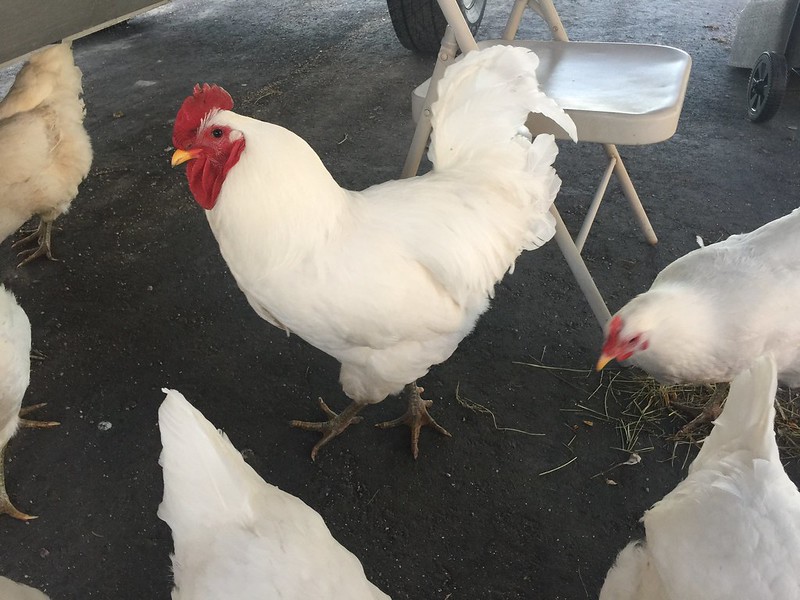
The Cornish hens are a great all-around choice for both egg-laying and brooding. They are hardy birds that love the outdoors and will lay up to 250 large brown eggs yearly.
- Recognized by APA – Yes, 1893
- Cold Hardy – Yes
- Heat Tolerant – No
- Dual purpose breed – Yes (but not as meaty as the Cornish Cross)
- Size – Hens – 7 – 8 lbs
- Eggs – Large, brown, approx 150 per year
- Personality – Docile, friendly, quiet, laid back
Silkies
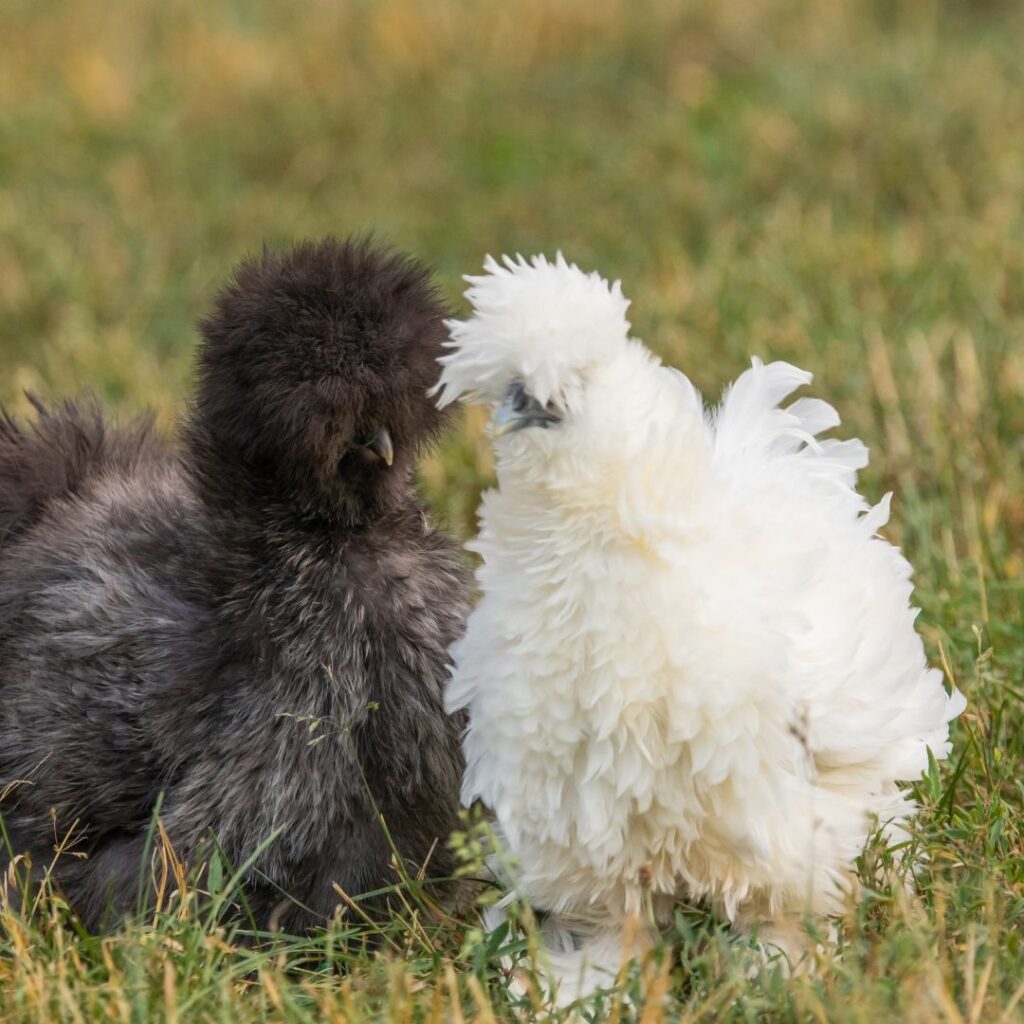
The Silkie is another great choice for brooding because of its gentle nature and maternal instincts. Not only will it make a tremendous mothering hen, but it also makes an excellent pet due to its calm demeanor and friendliness towards humans. Silkies lay around 100 small eggs annually, making them ideal if you’re looking for smaller eggs.
A broody Silkie can be an ideal setter for other hens. Place their larger eggs in with the broody Silkie, and she’ll hatch eggs for the other moms like a champ.
- Recognized by APA – Yes, 1897
- Cold Hardy – Yes
- Heat Tolerant – O.K.
- Dual purpose – No
- Size – Hens – 2 lbs
- Eggs – Small, light-colored, approx 100 per year
- Personality – Calm, friendly, gentle. Make great pets
Orpington
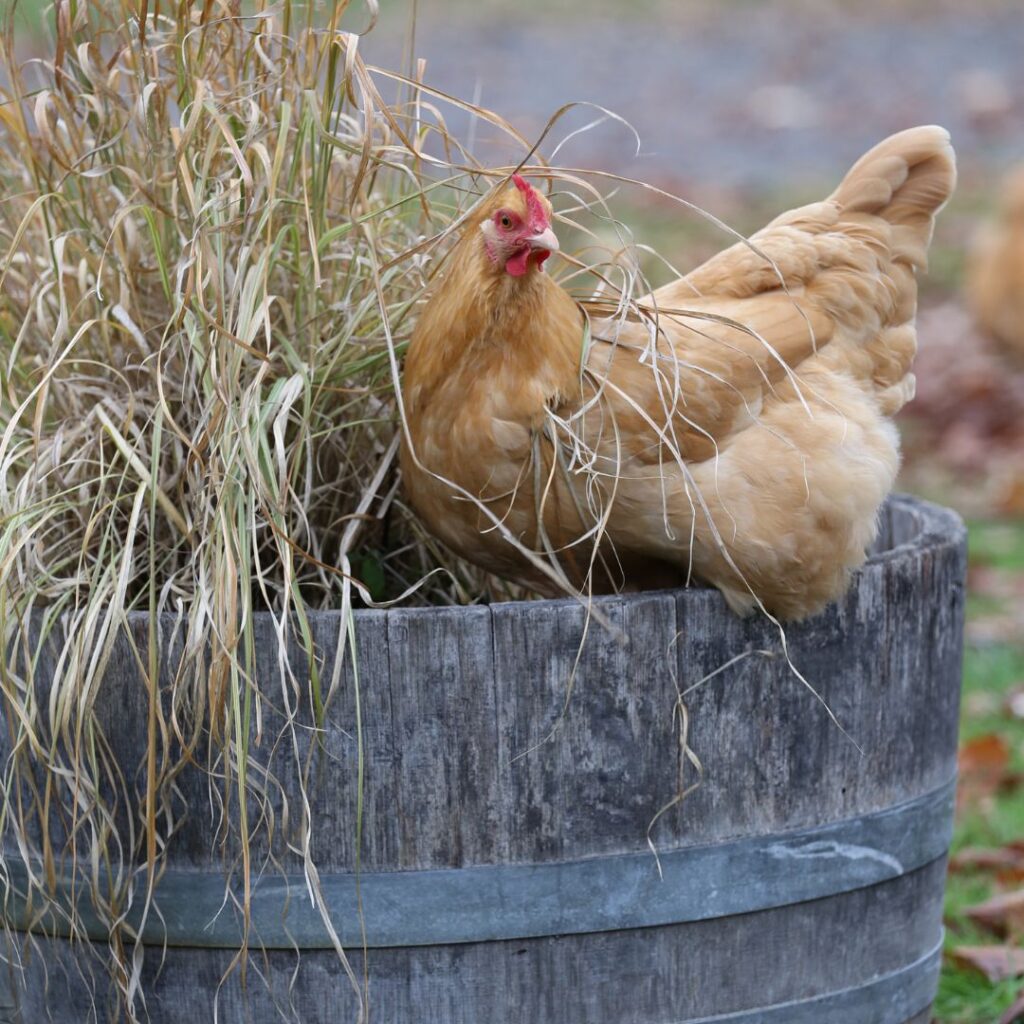
The Orpington hen is a large, fluffy bird with feathered legs and feet. They are known for their undeniable mothering instinct.
They are relatively quiet and docile and are known for producing about 200 eggs per year.
The Buff Orpingtons and other Orpingtons are known for being cold hardy chickens and one of the best egg-laying chickens.
- Recognized by APA – Yes, Buff – 1902, Black, White – 1905, Blue – 1923
- Cold Hardy – Yes
- Heat Tolerant – No
- Dual purpose – Yes
- Size – Hens – 7-8 lbs
- Eggs – Medium – Large, brown, 200-280 per year
- Personality – Peaceful nature, calm, friendly, also make great pets
Marans
The Marans hen is a classic French breed that lays dark chocolate-colored eggs at a rate of 150-200 per year. These birds are known for their hardiness and motherly instincts, so you can be sure your chicks are in good hands with them.
- Recognized by APA – Yes, 2020
- Cold Hardy – O.K.
- Heat Tolerant – Yes
- Dual purpose – Yes, o.k.
- Size – Hens – 6 1/2 lbs
- Eggs – Medium – Large, dark chocolate brown, 200 per year (hybrid Marans 250+ annually)
- Personality – Calm demeanor, friendly, peaceful, quiet
Speckled Sussex
The Sussex is a hardy bird that loves nothing more than free-ranging in green pastures. It lays up to 200 large brown eggs annually, making it a great addition if you’re looking for consistent egg production. These hens are also considered some of the best mothers in the business, so rest assured your chicks are in good hands.
- Recognized by APA – Yes, 1874
- Cold Hardy – O.K.
- Heat Tolerant – O.K.
- Dual purpose – Yes
- Size – Hens – 7 lbs
- Eggs – Large, brown, approximately 240 per year
- Personality – Friendly, chatty, active
Turken (Naked Neck Chicken)

The Naked Neck Chicken, also known as the Turken, is an unusual-looking bird with a bare neck and feathered body. This breed is great for brooding because of its docile nature and motherly instincts. It lays medium-sized brown eggs at a rate of 200-250 per year and makes for an excellent meat bird.
Not only are these one of the best chickens for hot climates, but they are also known to be cold-hardy with proper care. They’re known to be goofballs and great conversationalists.
- Recognized by APA – Yes, 1965
- Cold Hardy – O.K.
- Heat Tolerant – Yes, Excellent
- Dual purpose – Yes
- Size – Hen – 6 1/2 lbs
- Eggs – Large, Brown, 180-240 per year
- Personality – Friendly, social, silly Known as ‘goofballs’ in the chicken world
Wyandotte
Finally, the Wyandotte is another great choice for brooding due to its hardy nature and maternal instincts. It lays around 200 large brown eggs per year at a steady rate. They are cold-hardy, so you don’t have to worry about them in the winter months.
- Recognized by APA – Yes, 1880’s – early 1900’s (varies by color)
- Cold Hardy – Yes
- Heat Tolerant – Yes
- Dual purpose – Yes
- Size – Hens – 6 1/2 lbs
- Eggs – Large, brown, 200-250 per year
- Personality – Docile, confident, independent
Broody Bantams

Most bantams will go broody. There are only two bantam chicken breeds that are not likely to go broody. They are the Rosecomb and the Sebright bantams. Even if your chicken is not expected to be a broody chicken breed, you can place their fertile eggs under a broody hen of either bantam or standard-size momma hen.
Encouraging Your Broody Hen
If you want your broody hen to wait until you’ve gathered or purchased fertilized eggs, you can encourage her to set by placing a plastic or wooden egg or golf balls under her. As soon as your clutch is ready, place those future baby chicks under your broody hen.
How Long Does A Hen Set On Her Eggs?
Twenty-four hours a day except getting up to get a bite to eat, drink, and poop.
Twenty-one days (give or take a couple of days) til all chicks are fully hatched.

How Many Eggs Can a Broody Hen Sit On?
A full-sized Buff Orpington hen can sit on 10 – 12 full-size eggs. Putting all bantam eggs under that same Buff Orpington could fit about 18 eggs under her.
Bantam hens can sit on about 10 of their bantam-sized eggs. However, if you put large standard-sized eggs under that little bantam, you’ll want to be sure her body covers the number of eggs under her for warmth.
Nutrition When Hatching Eggs With Broody Hen
Nutrition For Broody Chickens
Broody hens stop laying while they’re setting (hatching). This eliminates the need for feed with a calcium supplement (layer feed). Remove any layer feed as soon as you notice your chicken has gone broody, and return this when she has done raising her chicks.
Note: as for chicks, you want to keep them on a chick starter for a bit; you can read more about raising chicks here.
During this time, your hen eats 80% less than before going broody. That reduction in food over several weeks can take a real toll on your hen’s body and health. They will lose quite a bit of weight these days, so it’s essential that what you feed them is rich in nutrients and calories.
To help your broody hen stay healthy and maintain some level of energy for their chicks, you will need to switch your broody hen as early as possible to a chick starter feed, which contains 18-20% protein.
In addition to the chick starter, add some scratch grain high in carbs. These extra calories and carbs will go a long way to helping sustain your hen.
Of course, clean, fresh, cool water should always be available.
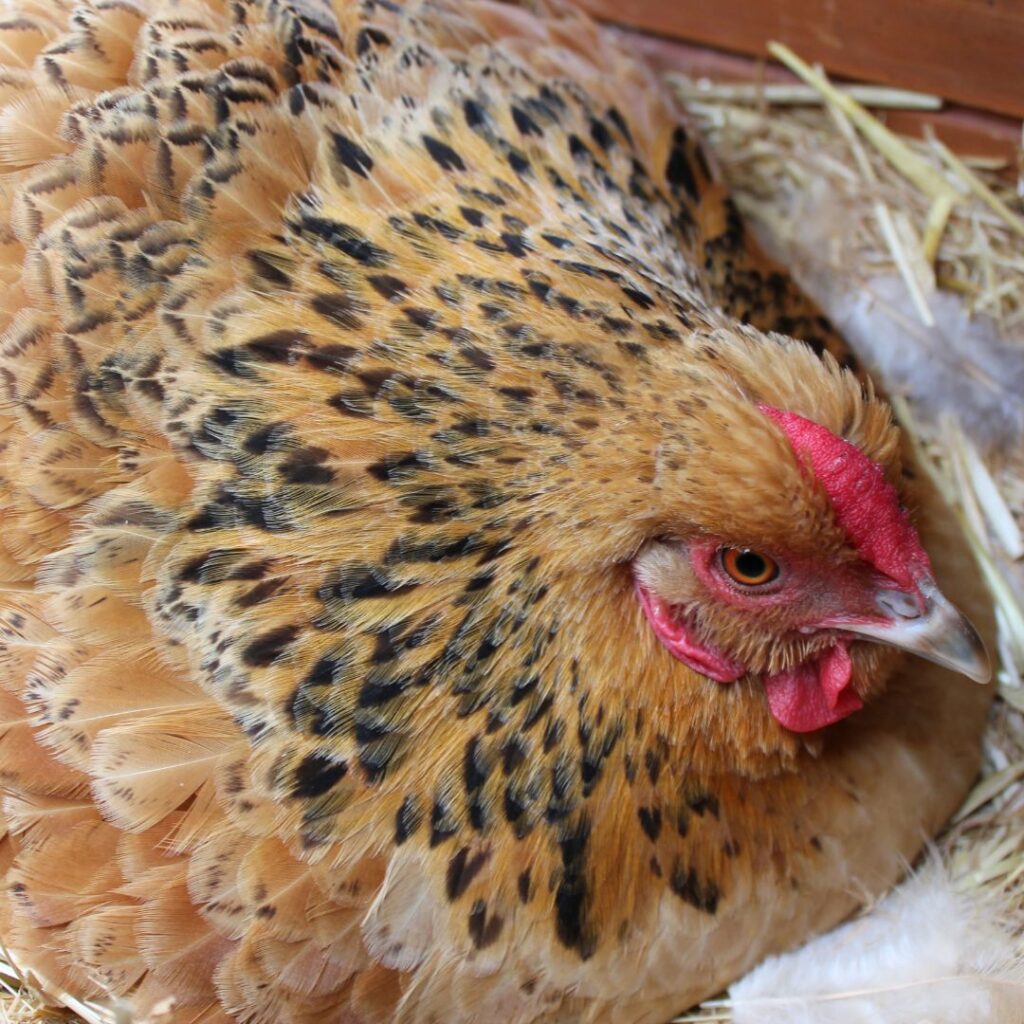
Other things to have for your broody chickens & future chicks
- Extra bedding in the nesting box.
- Have nesting box secure away from other nosey birds. Be sure mamma has her feed and water placed close by the nesting box. (about nesting boxes)
- A dust bath for mama hen and her chicks to bath and care for themselves. (about dust baths)
- For the first few weeks, a Brooder box area for the mama hen to feel safe and secure with her day-old chicks and as they age.
Benefits Of A Broody Hen In Your Flock
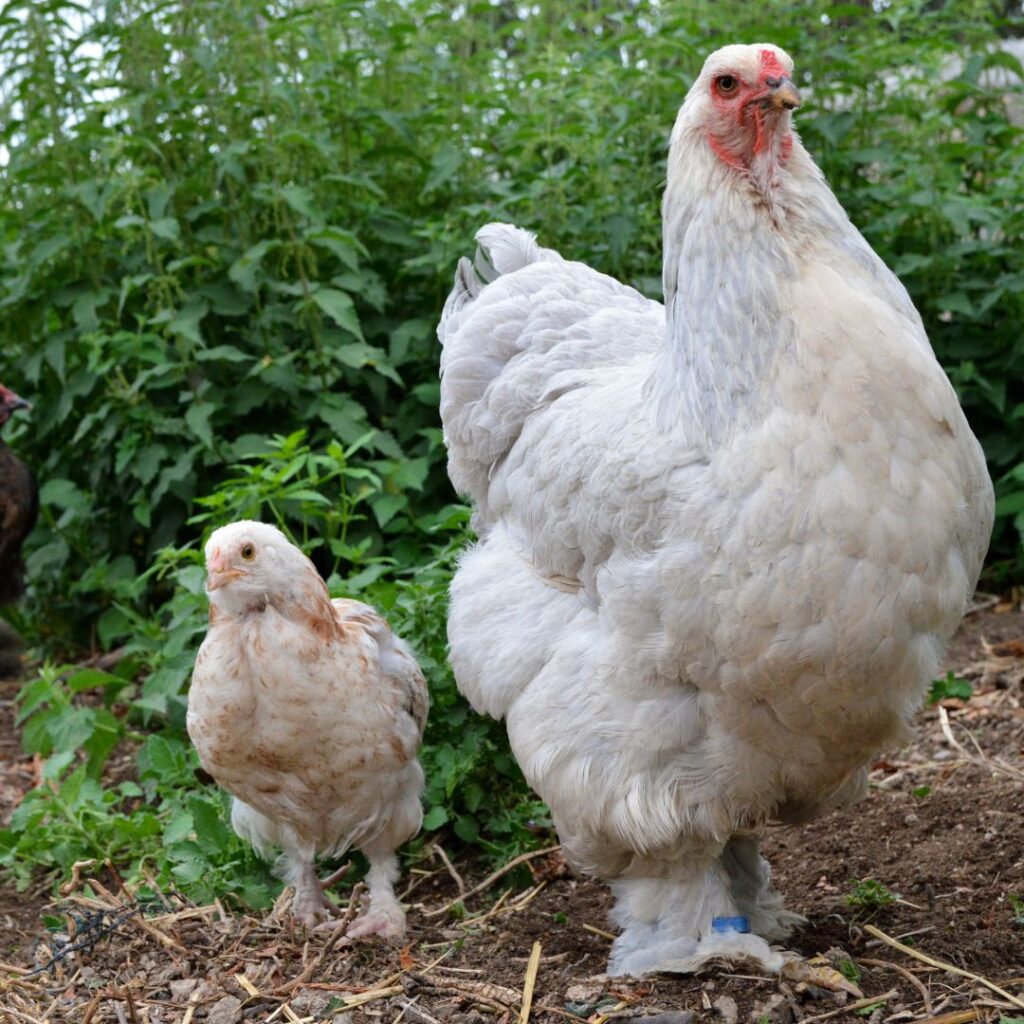
Year-Round Hatching
One of the benefits of having a broody hen is that she will hatch and raise her clutches into chicks throughout the year. You won’t have to buy chicks from your local farm supply store or an incubator to hatch them yourself.
All a mama hen needs to hatch her eggs is a clutch of eggs that have been fertilized, and she will take care of the rest. You can gather these future chicks from other hens and order from hatcheries.
Plus, since she is raising her chicks, she has more incentive to protect them from predators and keep them safe from harm.
Read About Chicken Care In Winter Months Here.
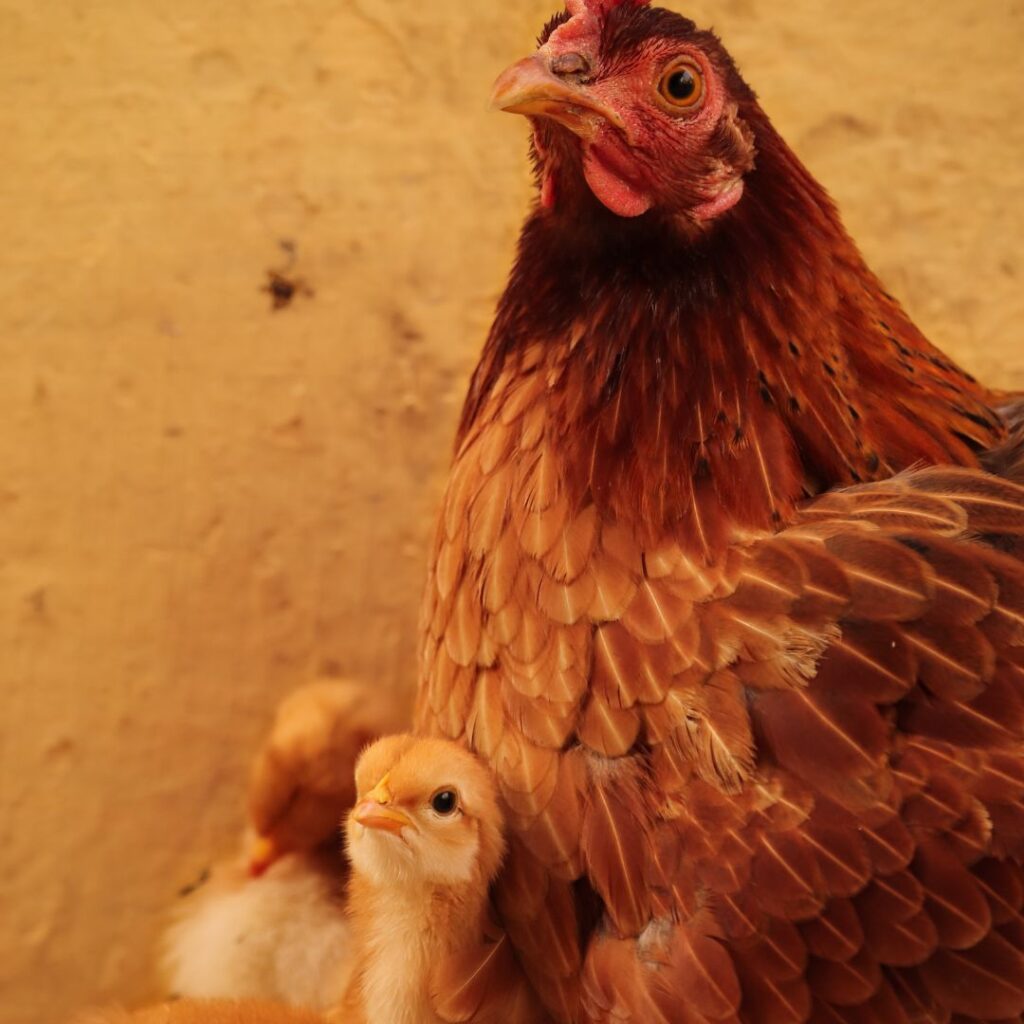
Cost Savings
Having one or two broody hens in your flock also saves money in the long run. Not only do you not need to purchase an incubator for hatching eggs (which can be pretty expensive), but you also save money on brooder box extras like heat and lighting since the mother hen will raise her chicks without extra assistance from humans.
This means lower electric bills during the baby chick stage (6 weeks). The mother hen keeps her eggs warm and the chicks warm when young.
Plus, if you utilize natural methods such as allowing your chickens access to pasture and bug hunting (aka free range), their feed costs are lower than usual since they find some of their own food sources.

Natural Parenting Skills
Another benefit of having broody hens in your flock is their natural parenting skills that help ensure their babies survive and thrive. Broody hens are excellent at keeping their young warm and dry when it’s cold outside, and they instinctively know how to teach their young how to find food sources like bugs and plants so they can stay nourished.
They also know how to protect their young from predators by warning them with loud noises or even attacking predators if needed. Witnessing Mother Nature’s parenting skills first-hand can be amazing.
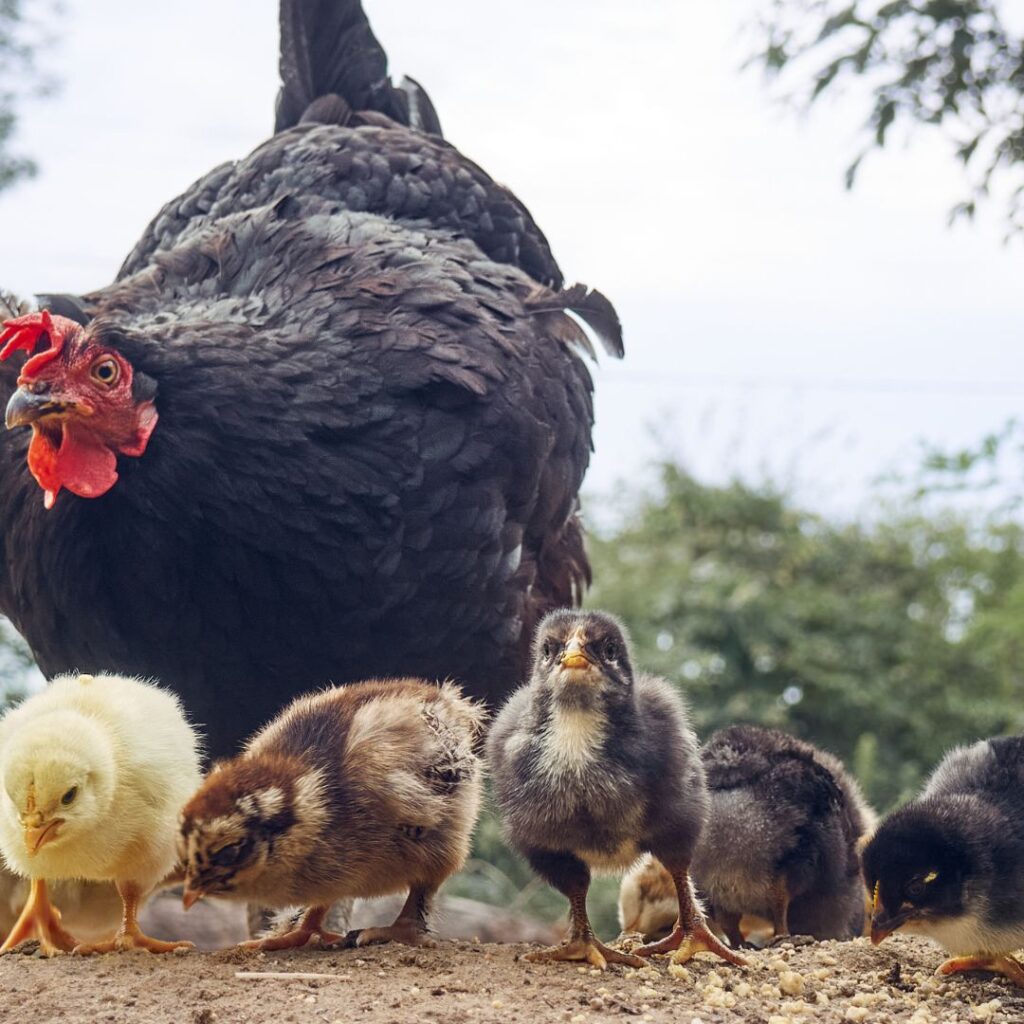
Introduction To Other Flock Members
Introducing new young birds to a flock can be stressful for your chickens and yourself. There’s the transition time, raising them, then fully integrating them to meet their flock mates for the first time.
Your young pullets and cockerels are learning the pecking order and their place in the flock, which can be dangerous if not done correctly.
When a broody hen has hatched and introduced her chicks to their new environment, all this transition stress and time is handled by the mama hen.
Older Hens Can Be A Huge Help
Long after your hen is past their peak for egg production, she will still have her broody tendencies. An older hen can set on a clutch of eggs and hatch chicks for the younger hens who don’t have these same broody tendencies. Who says these older chicks aren’t as valuable as the younger egg-laying ladies? Find out about how long hens lay eggs here along with their average life expectancy.
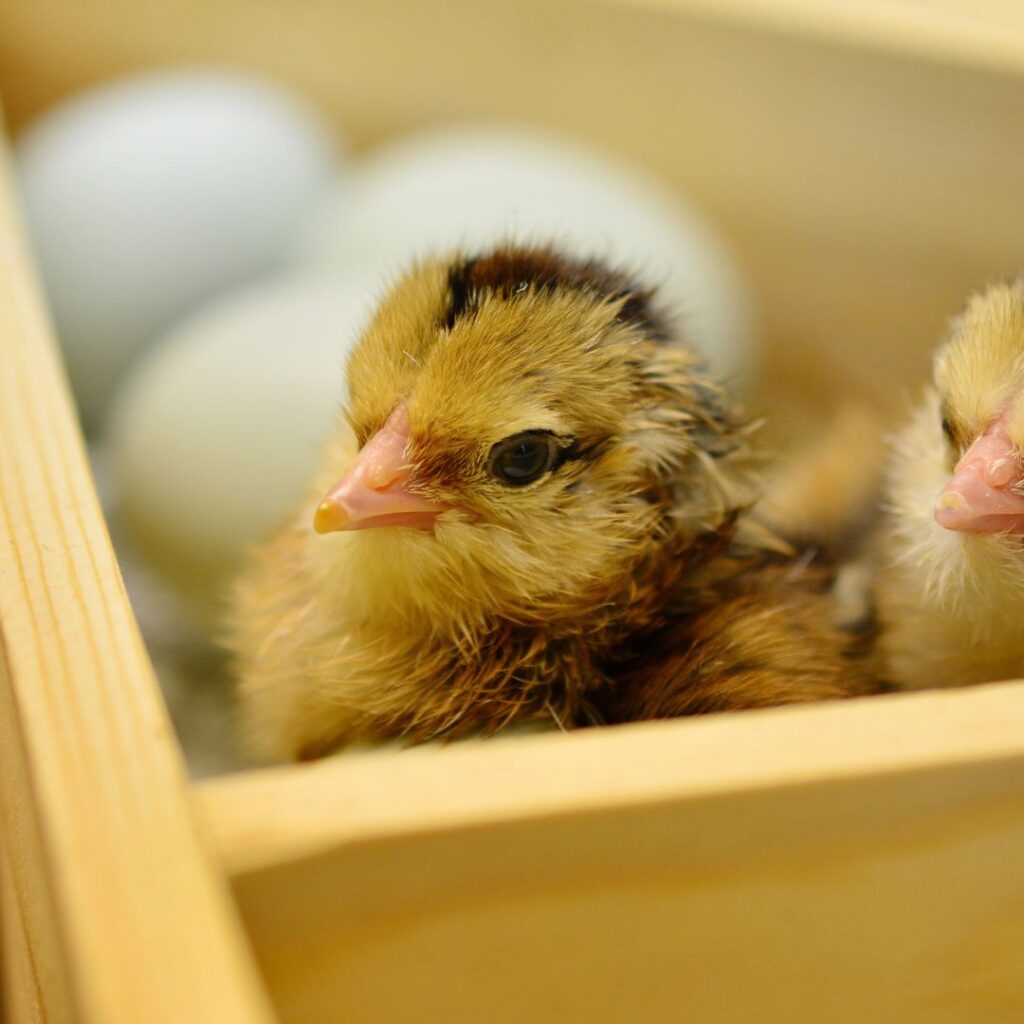
Disadvantages Of A Broody Hen
More Roosters
There are no guarantees when your hen is hatching eggs that the chicks hatch as females. You could end up with more roosters than you want or need. If you’re a homesteader enjoying birds for meat, this can greatly reduce the excess roosters. However, if you’re not prepared for this, you could have a disturbing situation on your hands.
Cheer up. Rumors have it that hens hatching eggs naturally tend to produce a higher number of female chicks than males.
No Guarantees
Just as there are no guarantees if your chicks hatch as females, there’s no guarantee they’ll hatch. Although most broody hens instinctively know what they’re doing. Animal instincts are miraculous.
There are no guarantees your hen will be broody. What? That’s right, not all hens will go broody, and not all broody breeds are guaranteed to give your the desired results. Although choosing a breed that is more likely to go broody comes with a much higher rate of success. Remember, a broody hen will still hatch eggs from other hens without prejudice to where the fertile eggs came from.
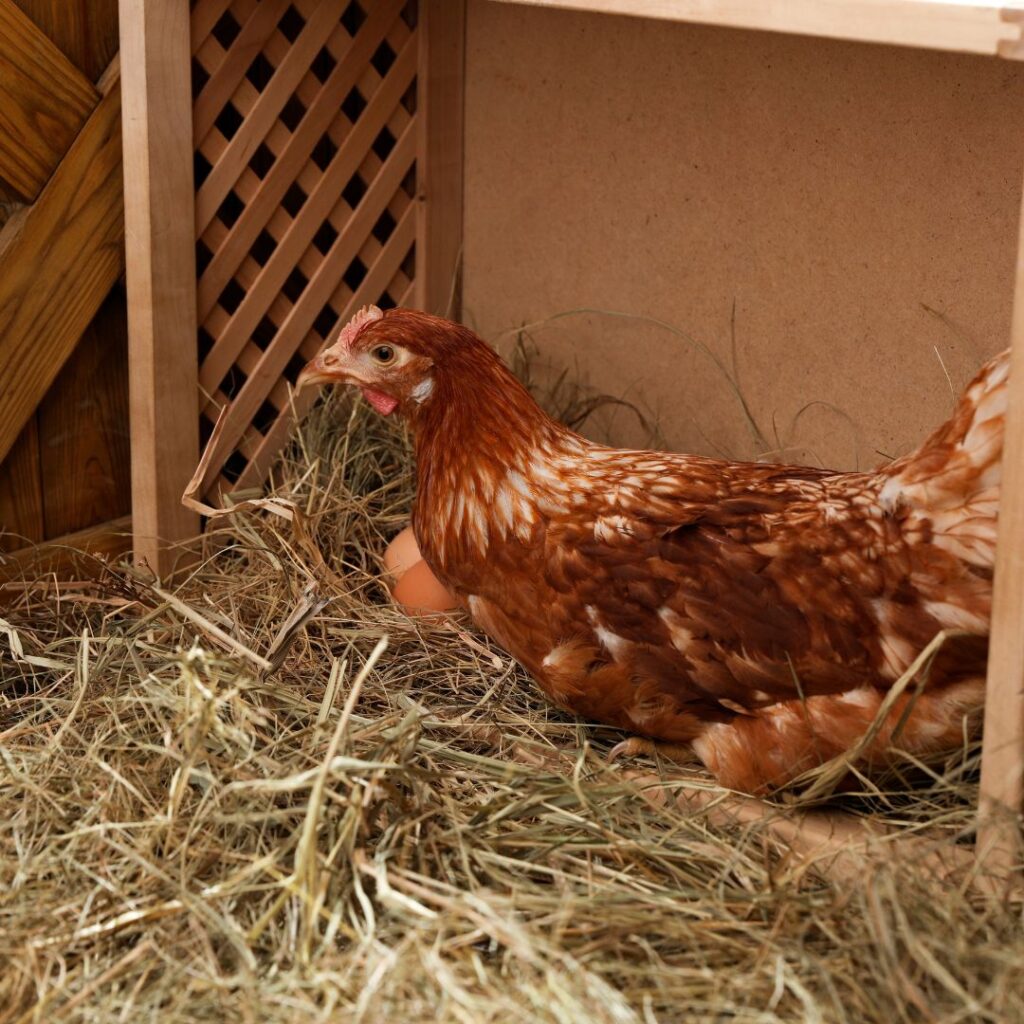
Where Are The Eggs?
You’ll notice an instant decrease in eggs from your broody hen. Of course, you anticipated this and hopefully have ‘less’ broody chicken breeds in your flock that are balancing the supply you desire from your flock.
Will My Hens Stop Laying Eggs When Broody?
Yes. Mamma’s total focus is on hatching eggs or caring for her chicks. You may need to separate the hen from her chicks around six weeks old for a week or so. Once she’s stopped caring for her chicks, your hen will resume laying within about a week or so.
Note: There are other reasons hens stop laying aside from broodiness. You can read more about that here.
7+ Least Broody Chicken Breeds
Chicken breeds and hybrids that were developed and bred to be egg and or meat production birds are less likely or not likely to be broody hens. Some examples of these would be:
- Barred Plymouth
- Red Sex Link
- Black Star Sex Link
- Red Star Sex Link
- Golden Comet
- ISA Brown Chickens
- Easter Egger
- Leghorns
- Rhode Island Red
- New Hampshire Red
Read About Cold Hardy Chicken Breeds Here.
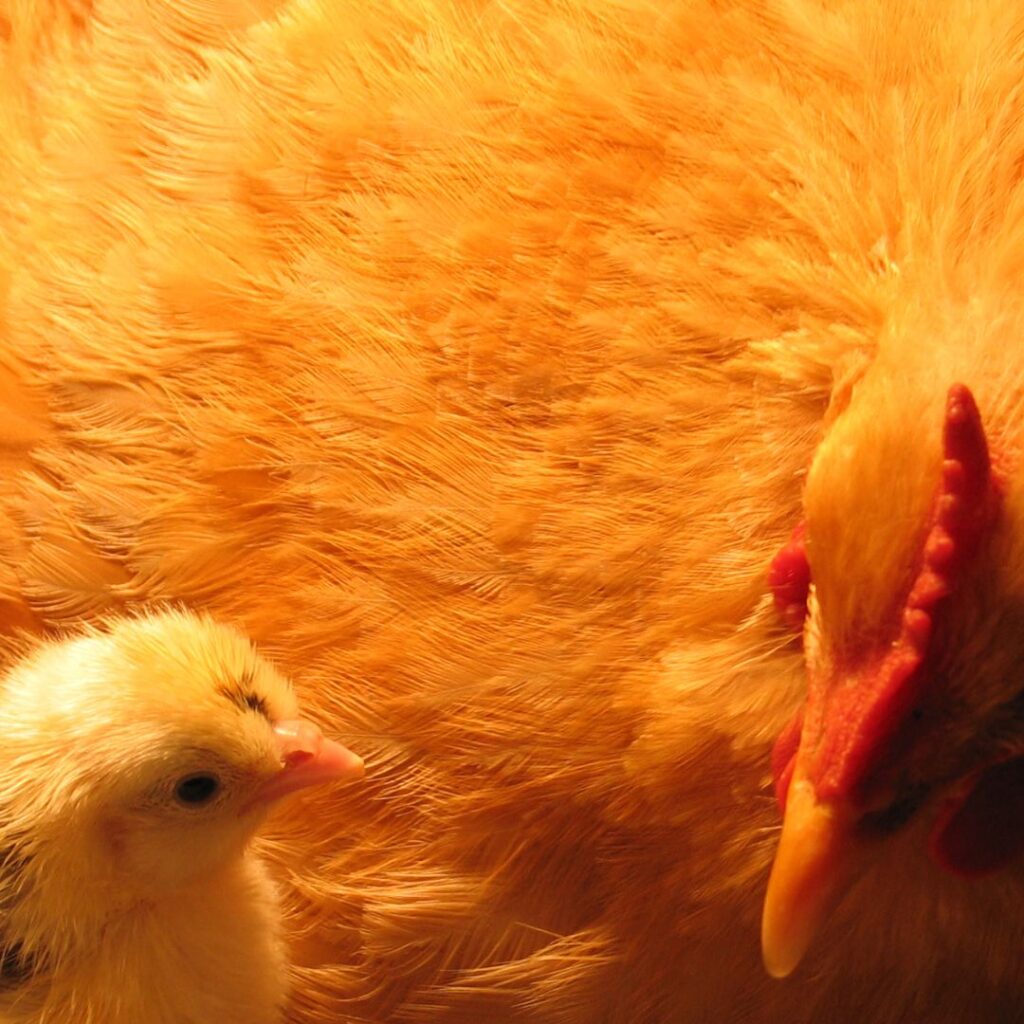
Summary:
Whether you’re trying to sustain a commercial flock or want extra help hatching your backyard chickens’ eggs, having a few good broody hens around can make all the difference. With these nine breeds being some of the best out there, you should have no problem finding one (or more!) that perfectly fits your poultry plans! So don’t wait—start looking now.
They provide consistent eggs each year and help maintain sustainability by hatching and raising their chicks without the need for outside intervention or assistance from incubators or other brooders. So if you’re looking for an easy way to start your journey toward a sustainable chicken-keeping experience – look no further than these amazing birds.
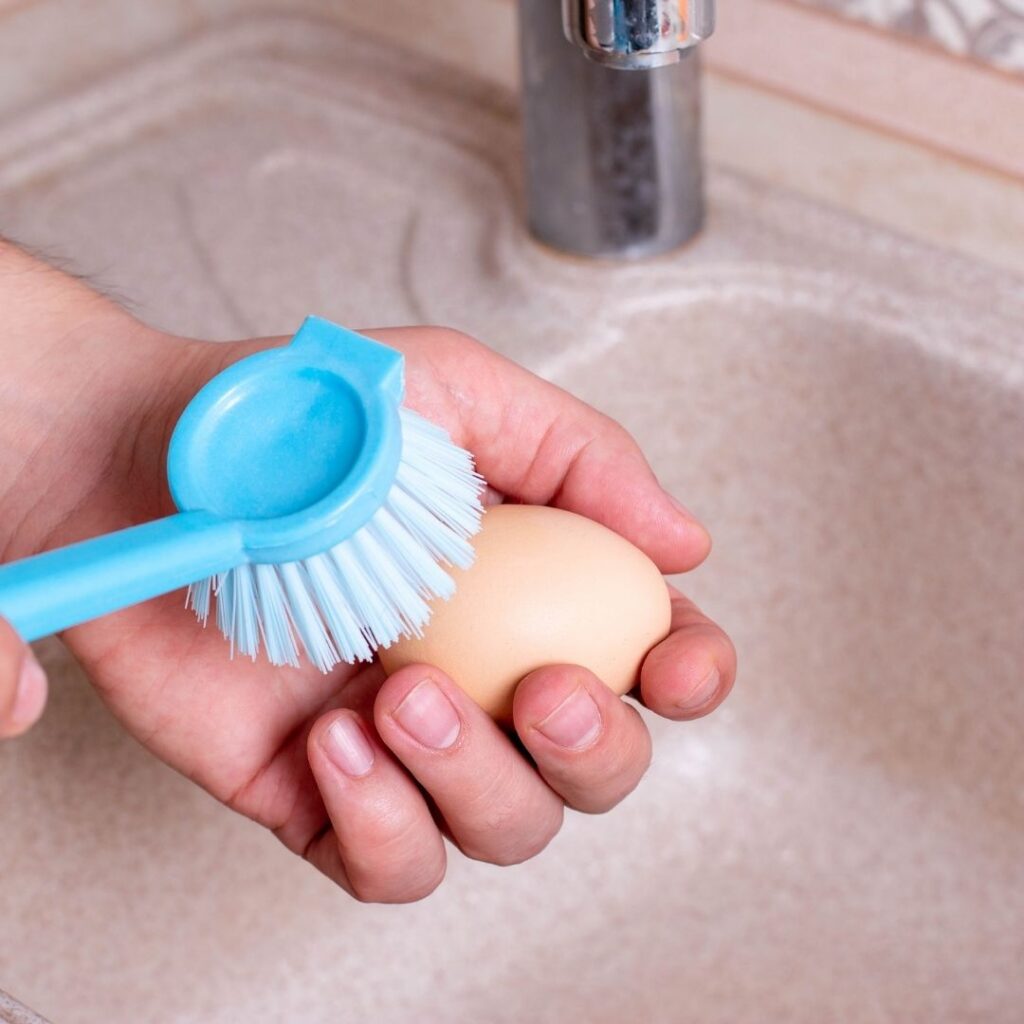

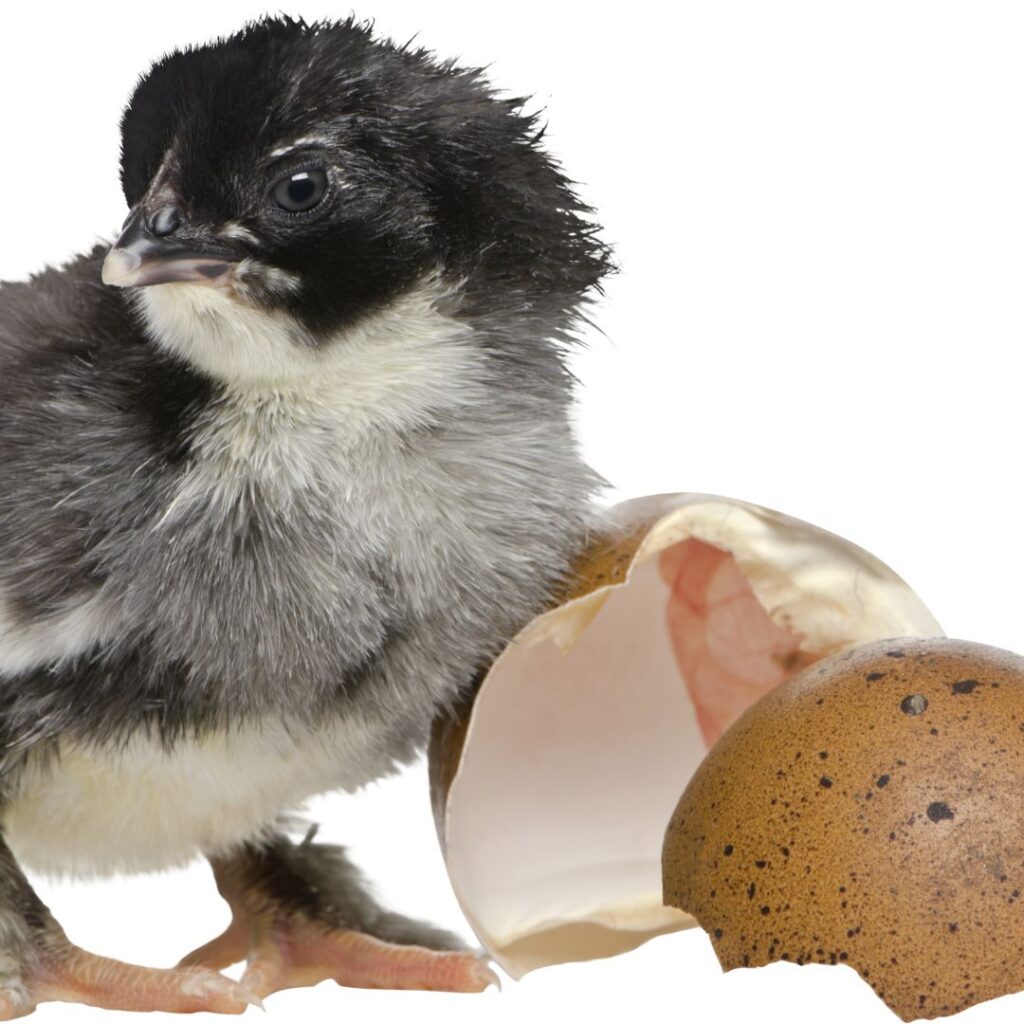

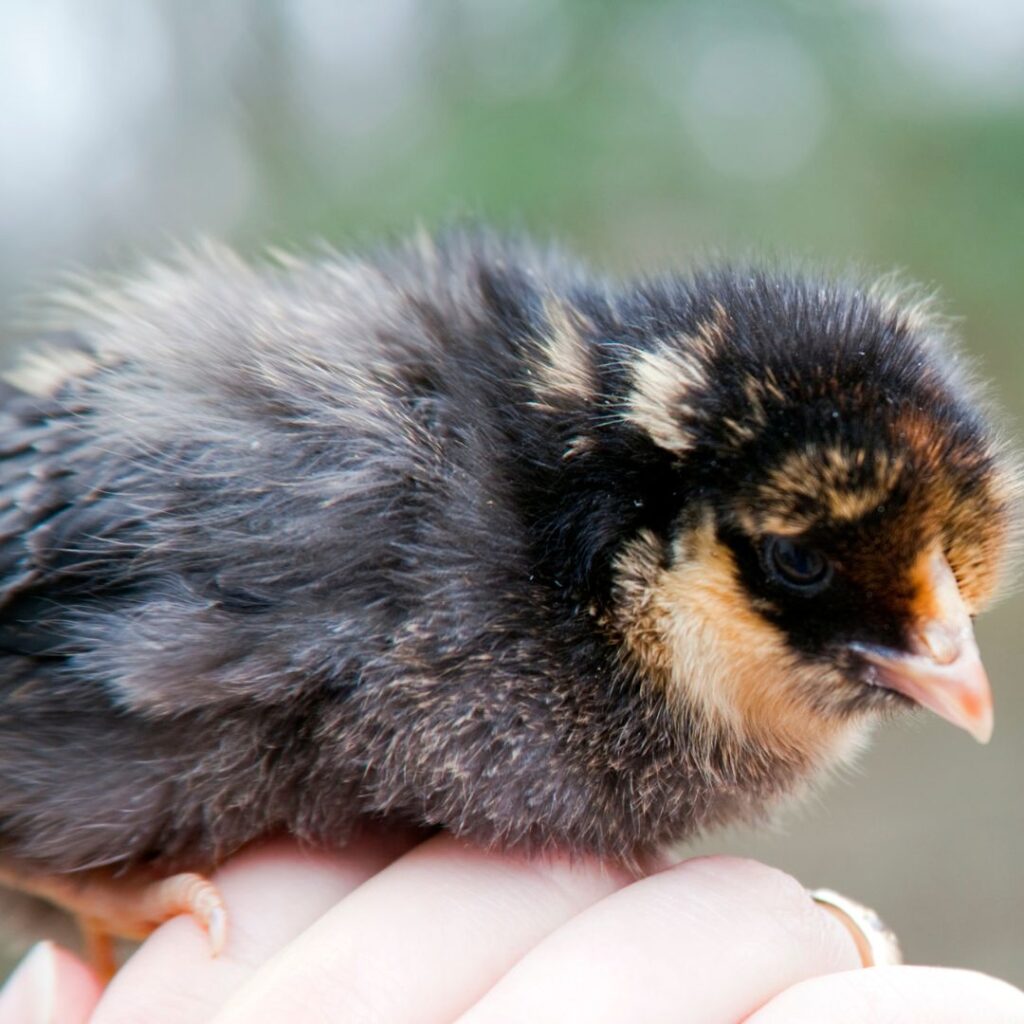
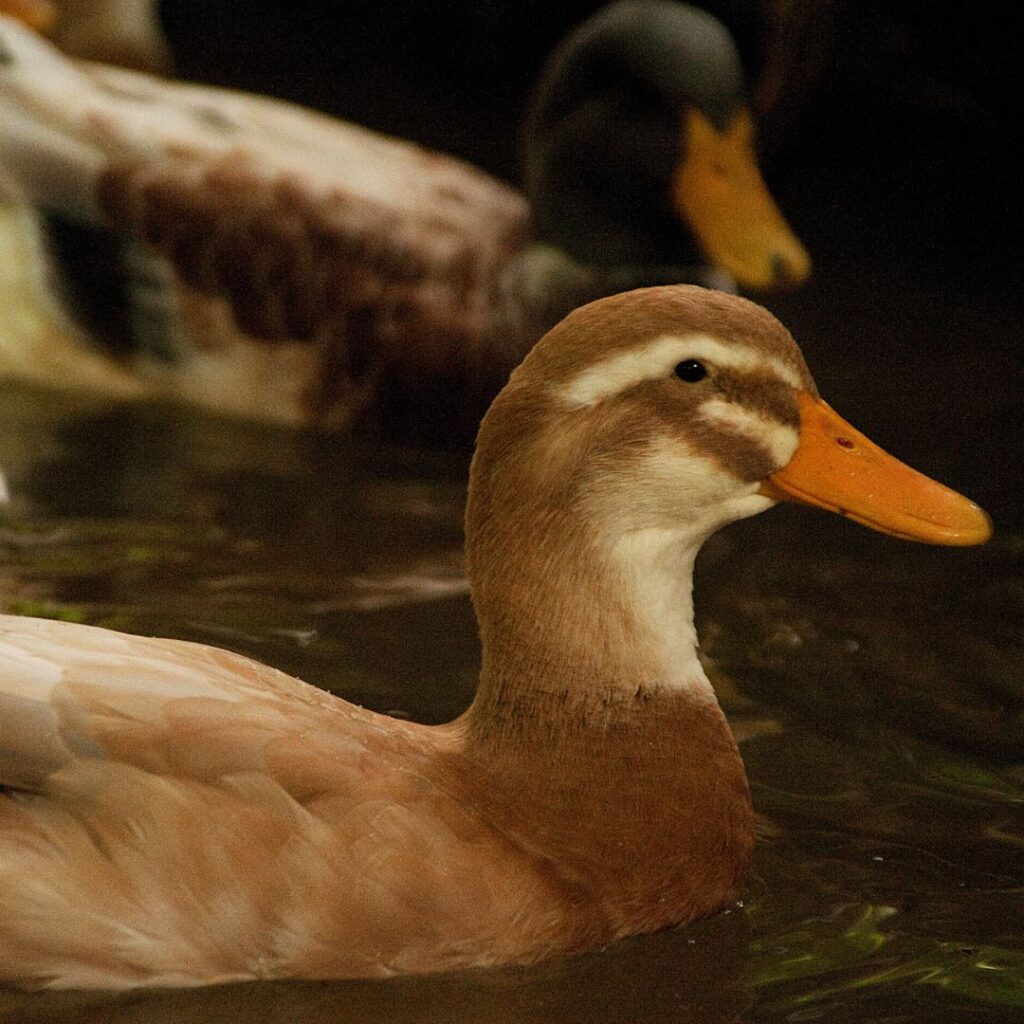
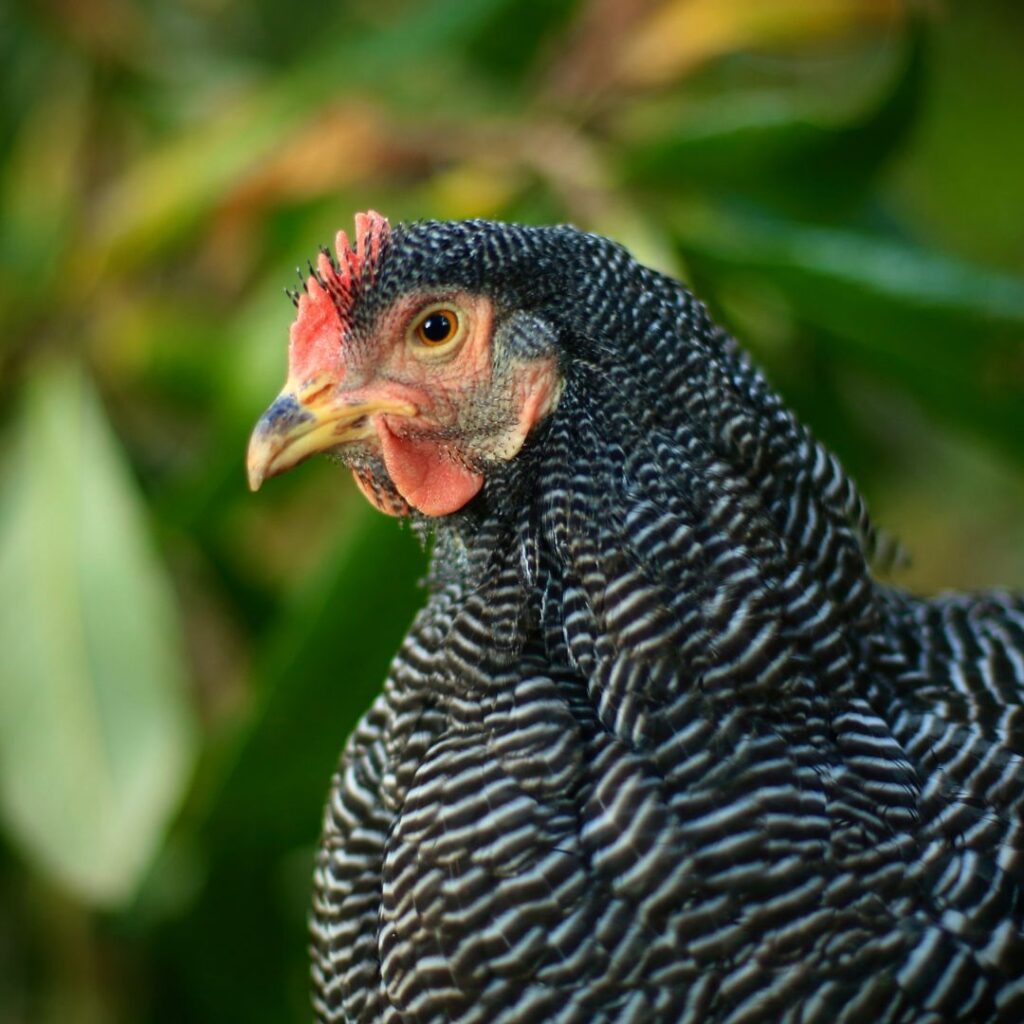
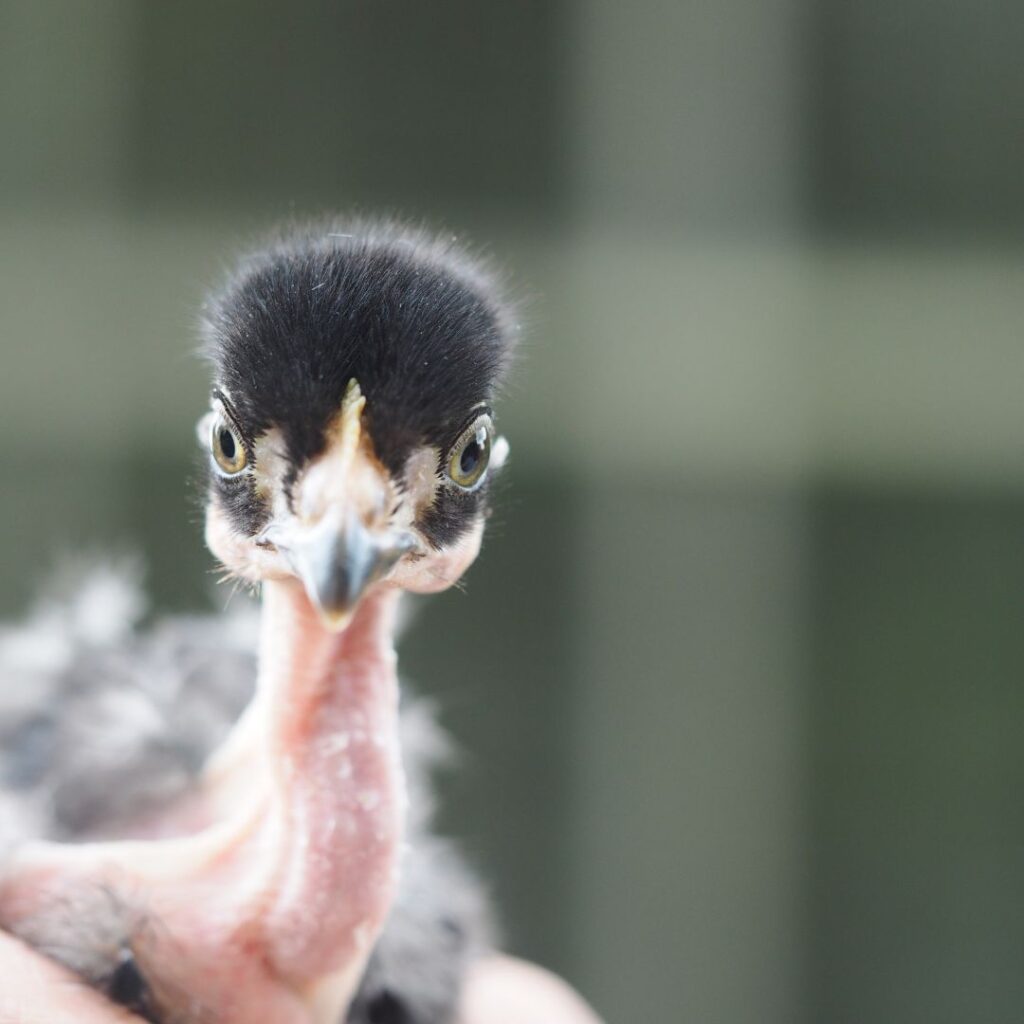
Pingback: Chickens Stop Laying Eggs? Common Reasons - Gilmore's
Pingback: 15 Best Rooster Types & 3 Bantam Roosters: Sustainable Flock
Pingback: Polish Chickens: Pom Pom, Top Hat Chickens; All About